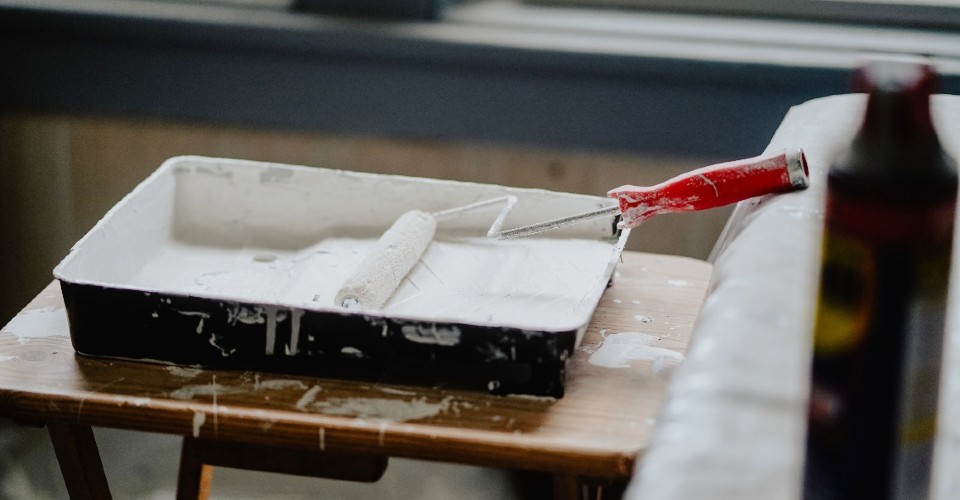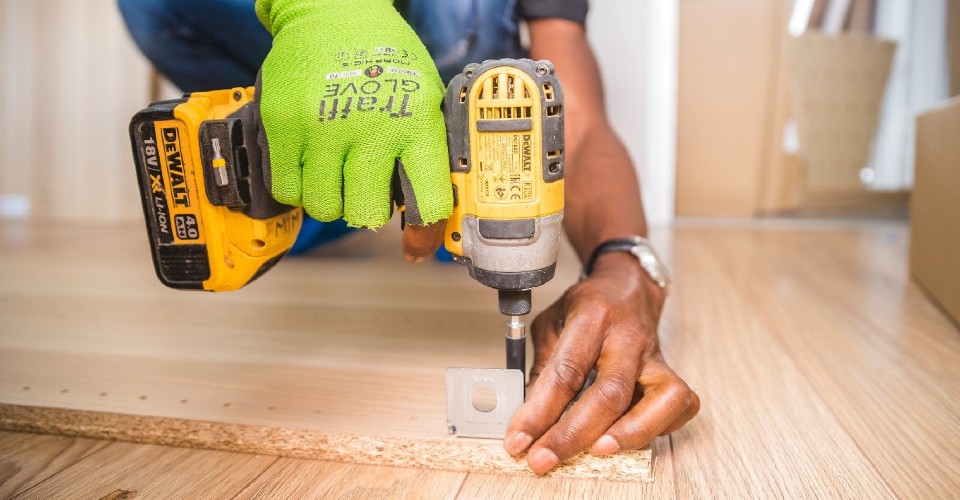Home improvements: When to DIY and when to call a professional
The UK is a nation obsessed: we just love DIY! From YouTube tutorials to DIY manuals, joinery classes to online plumbing tips, doing jobs yourself at home can save you lots of money.
But whether you’re new to home improvements or are a seasoned DIYer, it’s important to know your skills and understand your limitations. Nobody would like to attempt a job, only to find that a few weeks down the line, your inexperience has made the issue worse, not better.
So whether you’re renovating your whole home or just doing some odd jobs, our guide will help you to decide which jobs you do yourself, and which jobs you leave to the professionals.

Jobs you can do yourself
With a little bit of time and patience, there are some jobs that can be accomplished at home by even novice DIYers. Remember to take things slowly, and consider the consequence of your action before you enact it.
If you’re still under-confident or unsure, don’t hesitate to contact a professional — any bad DIY jobs will not be covered by your home insurance.
1. Bleeding radiators
If you find that not all of your radiator is heating up, it could be because it needs bleeding. Bleeding radiators is a simple job: all you’ll need is a radiator key, a bowl, and a towel.
- First, turn off your heating.
- Use the radiator key to turn the valve at the top of the radiator, placing the bowl underneath to catch the water.
- Keep turning it until the hissing stops and the liquid comes out. Then, the job’s done!
Turn the central heating back on, and ensure the pressure is correct. Simple!
2. Plastering
Plasterers are skilled labourers — but if you’re trying to stick to a budget when doing up a house, it could pay to teach yourself this skill through watching well-reviewed YouTube videos.
You will need to:
- Mix the plaster to the ideal desired consistency — be sure to read the instructions on the plaster to make sure you’ve got it right.
- Once the plaster is mixed, clean the walls
- Lay a groundsheet and apply diluted PVA glue to the walls to prepare it.
- Use a plastering trowel to pick up some plaster, and spread it onto the wall using firm upwards strokes, with the trowel angled slightly away from the wall.
With a bit of patience and practice, you can plaster walls cheaply.
3. Tiling
Tiling is another skilled technique that can be learned with a bit of patience and practice.
- Before you begin, it’s important to plan carefully. Measure the area that you would like tiled and the size of the tiles that you will use in order to work out how many tiles you will need.
- Press tile adhesive to the wall, and spread it with a notched trowel, holding it at an angle to the wall.
- Place your first tile in the corner, and add a tile above it and to its side — pushing them firmly into the adhesive — wiping off the excess as you go.
- Use tile spacers to ensure that each tile is evenly placed, and wiggle the tiles down into place. Once you have completed the wall or floor, leave them to set for the time stated on the adhesive instructions, and you can start grouting.
When it comes to mastering corners, make sure you check out a YouTube tutorial in order to get it right.
4. Painting or wallpapering
A fresh coat of paint or a roll of wallpaper can give a whole room a new lease of life. Painting and decorating is a great way to transform your home relatively quickly; you can achieve great effects with ease.
When painting, be sure to:
- Use primers or undercoats
- Use lining wallpapers to cover up damaged walls
- Choose high quality brushes and rollers, and wash them correctly after use
When it comes to wallpapering, be sure to:
- Use a trestle table to apply the wallpaper paste before you apply it to the wall
- Match the patterns carefully
- Cut carefully around skirting and switches
5. Fixing a leaky tap
A tap might be dripping for one of two reasons:
- If water is leaking from the spout, then a washer needs to be replaced
- If the leak is from the bottom of the handle, then the valve O-Ring may need replacing.
There are two types of valve devices: compression valve or ceramic disc valve. The type of valve you have will determine the type of washer that you need.
- Before you begin, turn the water supply off at the stop cock with a screwdriver and an adjustable spanner
- Put the plug in the sink before you begin to dismantle the tap, so that you don’t lose small parts down the drain
- When reassembling the tap, be careful to not overtighten the washer or valve, as it can cause damage

Call a professional
Put simply, there are some jobs that no homeowner should try to take on. What might be a simple fix for a qualified professional can be dangerous for an amateur to tackle, and could even invalidate your buildings insurance.
Here are five examples of jobs you should leave to the experts:
1. Fixing a gas leak
If you smell gas in your home, don’t try to tackle any leak yourself. Gas leaks are incredibly dangerous and can result in explosions (known to have seriously injured or killed people) — so it’s vital that you leave it to the experts.
If you know where your gas meter is, turn it off, and call the 24-hour Gas Emergency Services line on 0800 111 999. The operator will advise you what to do next and send out an engineer.
It’s a good idea to open all your doors and windows to help the gas escape. Don’t use any light switches or open flames, which could spark an explosion.
2. Installing electrical cabling
Electrical work in the home is a highly regulated area, and for good reason. Any substantial electrical jobs are covered by Building Regulations laws, the legal framework that sets the rules on how homes are built.
Part P of the Building Regulations says that anyone doing electrical installation work must make sure the work is designed and installed to protect people from fire and electric shocks. Part P applies to any changes made to existing installations, including any parts that have been rewired.
If you're confident and have some experience with electrics, then there are some jobs in the home you can feasibly do yourself - like changing light fittings and swapping switches. But it’s important to be careful.
Make sure you’re clear on how to turn off your electricity properly, and read up on the latest advice.
3. Removing asbestos
Asbestos can be found in any home built or renovated before 2000. It was used to insulate and fireproof buildings and can be difficult to spot. When it is disturbed or damaged, it releases fibres which can cause fatal diseases if inhaled, so if you think there may be asbestos in your home, don’t try to repair or remove it. Left as it is, it is not an immediate danger, but check its condition from time to time to make sure it hasn't been damaged or started deteriorating.
Asbestos removal should only be carried out by trained professionals, and it needs to be legally disposed of as hazardous waste. You can get advice from the environmental health department at your local council.
4. Fitting a new bath
When it comes to complex plumbing jobs like fitting a new bath or shower, leave it to a qualified professional or you could be fined for breaking Water Regulations.
Approved fittings must be used, and in some cases you may also have to tell your local water supplier before carrying out work. If you break the rules, your home could even be disconnected from the water supply.
5. Knocking down an internal wall
Open-plan living is a great way to maximize the space in your home, but before you take a sledgehammer to that wall, get the advice of a structural engineer. If the wall is load-bearing (supports the upper level of your house), your home could be at risk of collapse. Load-bearing walls also often contain electrical wiring and plumbing, which will need rerouting by a professional.
Speak to your local council before you start any substantial building work like this, as you may also need to get Building Control’s approval. Employing a professional builder means it’s their responsibility to make sure the work complies with all regulations.

Conducting home improvements
So whether you’re a DIY novice or a home improvements whizz, it’s important to be aware of your limitations. Get to grips with simple DIY tasks, whilst also understanding that sometimes, you will need to call in the professionals.
Things can go wrong, even with the best intentions, and it is possible to invalidate buildings insurance or to break buildings regulations if you complete jobs without the adequate knowledge or skill set.
Find out more about Swinton Building Insurance.